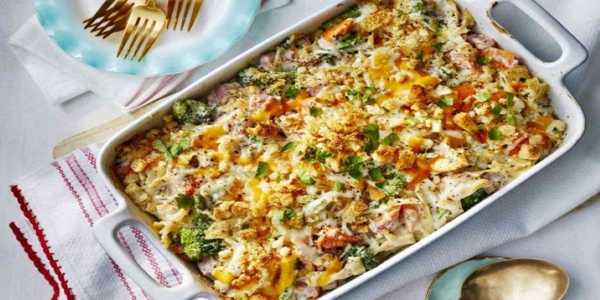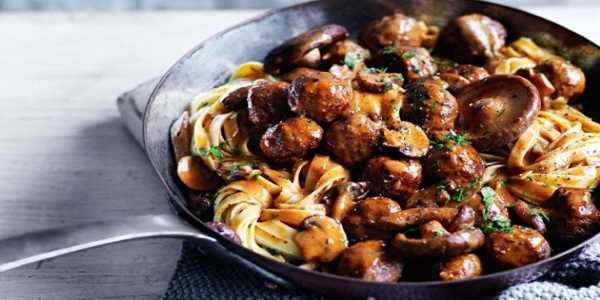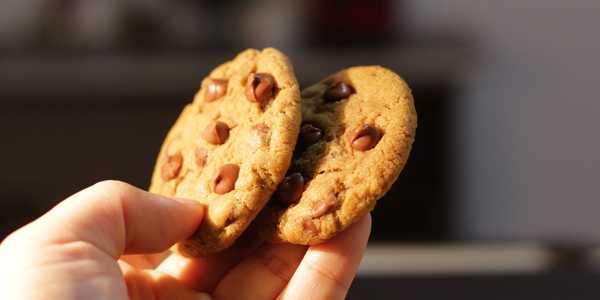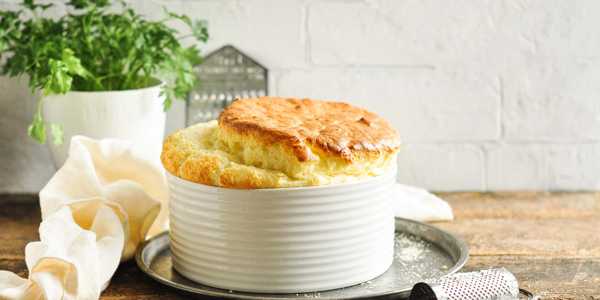4 Classic French Pastry Recipes Made Simple
French pastries often seem like the crown jewel of the baking world—delicate, decadent, and perhaps a little intimidating. But what if I told you you can make these classics right in your kitchen without formal training? From buttery croissants to luxurious éclairs, these recipes may look fancy, but with the right tips and techniques, they're more straightforward than you think. Let's dive into the world of French pastries and uncover their secrets.
Why French Pastry?
What makes French pastries so irresistible? It's the perfect balance of flavour, texture, and art. French patisserie embraces buttery layers, airy creams, and rich fillings, combining them into desserts that feel like edible art. The good news? You don't need to be in a Parisian bakery to enjoy them. A few essential ingredients and a touch of patience can get you started.
Tools And Ingredients You’ll Need
Before you get baking, it’s helpful to gather the essentials:
Tools:
o Rolling pin
o Piping bags and tips
o Pastry brush
o Baking sheets and parchment paper
o A candy thermometer (for caramel or ganache)
Ingredients:
o High-quality unsalted butter (essential for that French flavour!)
o All-purpose flour and pastry flour
o Eggs
o Sugar
o Heavy cream
o Vanilla extract or paste
o Optional: Chocolate, fruits, or nuts
Recipe 1: Buttery Croissants

The Ultimate Breakfast Treat
Croissants may seem daunting, but with some planning, you’ll be surprised at how achievable they are.
Ingredients:
• 3 1/2 cups all-purpose flour
• 1/4 cup sugar
• 2 1/4 tsp active dry yeast
• 1 1/4 tsp salt
• 1 cup unsalted butter (cold)
• 3/4 cup milk (warm)
• 1/4 cup water (warm)
• 1 egg (for egg wash)
Steps:
1. Prepare the Dough: Mix yeast, warm milk, and water. Let it bloom. In a bowl, combine flour, sugar, and salt. Add yeast mixture and knead into a dough. Rest for 30 minutes.
2. Incorporate Butter: Roll the dough into a rectangle and place cold butter in the centre. Fold the dough over the butter and roll it out. Fold into thirds and chill for 30 minutes.
3. Laminate: Roll and fold the dough 3-4 more times, chilling between each fold. This creates the signature flaky layers.
4. Shape and Proof: Roll out the dough, cut into triangles, and roll into crescent shapes. Proof for 1-2 hours.
5. Bake: Brush with egg wash and bake at 400°F (200°C) for 20 minutes until golden brown.
Pro Tip
Practice patience. Croissants take time, but the buttery, flaky payoff is worth every second!
Recipe 2: Perfect Éclairs
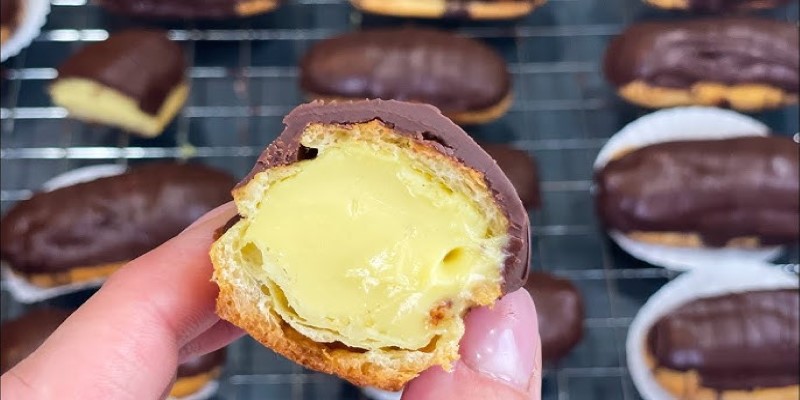
Cream-Filled Elegance
Éclairs are made with pâte à choux dough, a versatile pastry used for profiteroles and cream puffs.
Ingredients:
• 1/2 cup water
• 1/2 cup milk
• 1/2 cup unsalted butter
• 1 tbsp sugar
• 1 cup flour
• 4 eggs
• 1 cup heavy cream
• 1/4 cup powdered sugar
• 1/2 cup chocolate (melted)
Steps:
1. To make Pâte à Choux, boil water, milk, butter, and sugar until boiling. Add flour and stir until a dough forms. Cool slightly, then beat in eggs one at a time until smooth.
2. Pipe and Bake: Pipe long strips onto a baking sheet and bake at 375°F (190°C) for 25 minutes until puffed and golden.
3. Prepare Cream Filling: Whip heavy cream and powdered sugar until stiff peaks form.
4. Assemble: Slice éclairs in half, fill with cream, and dip tops in melted chocolate. Chill before serving.
Fun Fact
Pâte à choux doesn’t rely on yeast for rising—it’s all about steam!
Recipe 3: Tarte Tatin
A Caramelized Apple Delight
Tarte Tatin is a rustic yet elegant dessert that highlights buttery pastry and caramelized apples.
Ingredients:
• 4-5 medium apples (e.g., Granny Smith or Honeycrisp)
• 1/2 cup sugar
• 1/4 cup unsalted butter
• 1 sheet puff pastry
Steps:
1. Caramelize Apples: Melt butter and sugar in an oven-safe skillet over medium heat. Add apple slices and cook until caramelized.
2. Add Puff Pastry: Lay a sheet of puff pastry over the apples, tucking the edges in.
3. Bake: Bake at 375°F (190°C) for 25-30 minutes until the pastry is golden.
4. Flip and Serve: Carefully flip the tart onto a plate while still warm.
Pro Tip
Serve with a dollop of crème fraîche or vanilla ice cream for an indulgent finish.
Recipe 4: Classic Madeleines

Elegant Tea-Time Cakes
These shell-shaped sponge cakes are light, buttery, and surprisingly simple.
Ingredients:
• 2/3 cup sugar
• 3 large eggs
• 1 cup all-purpose flour
• 1/4 tsp baking powder
• 1/2 cup unsalted butter (melted)
• 1 tsp vanilla extract
Steps:
1. Mix the Batter: Whisk the sugar and eggs until pale and thick. Sift in the flour and baking powder. Gently fold in the melted butter and vanilla.
2. Chill: Let the batter rest in the fridge for 1 hour.
3. Bake: Spoon batter into madeleine moulds and bake at 375°F (190°C) for 10-12 minutes.
Fun Fact
Madeleines are known for their distinctive "hump," formed during baking.
Tips For Success
Use Cold Butter
For croissants and tarte Tatin, cold butter is essential for achieving flaky layers.
Be Precise
French pastry is a science. Use a kitchen scale for accurate measurements.
Resting Time Matters
Many pastries benefit from resting the dough—it develops flavour and texture.
Don’t Rush
Good pastry takes time. Enjoy the process!
Elevate Your Pastry Game
Once you’ve mastered the classics, try these creative variations:
Chocolate Croissants
Add a strip of dark chocolate before rolling the croissant dough.
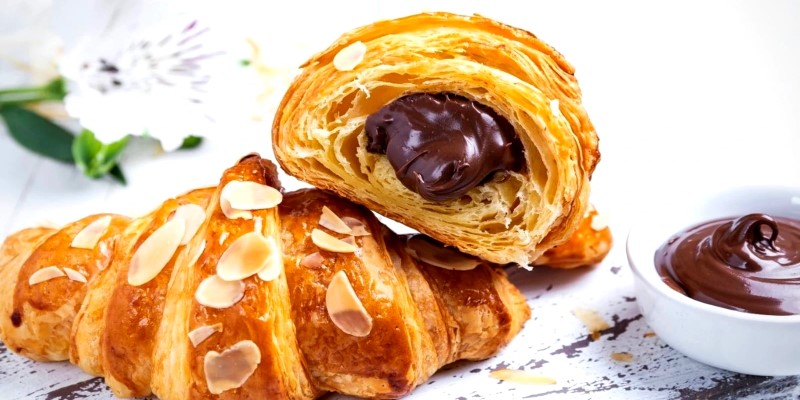
Savory Éclairs
Fill éclairs with cheese or herb cream for a sophisticated appetizer.
Seasonal Tarte Tatin
Swap apples for pears, peaches, or even tomatoes for a savoury twist.
Create A Little Paris In Your Kitchen
Baking French pastries isn't just about making desserts but creating moments of joy. Whether it's the first buttery bite of a croissant or the creamy indulgence of an éclair, these recipes bring a touch of France to your table.
So, tie your apron, preheat your oven, and let the delicious adventure begin. You'll be amazed at what you can create!
